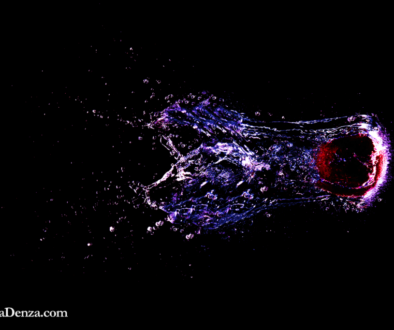I’ve known Kathy Fish through an online writing site for nearly a decade now. Back in 2003 I asked Kathy to help me with my first flash fiction attempt.
I’d noticed her short pieces, saw how even back then, she was a master with the form. Years later, she’s still amazing, and her work is playful and intelligent and fresh and will entrance you with its tragic beauty then two seconds later make you laugh out loud. Each of her pieces in her book, “Wild Life” is a glistening, detailed world in miniature, replete with humor, longing and willful creatures.
Kathy has graciously agreed to answer some of my questions about her process, her stories and her writing desires.
Katrina: I’d like to begin with your process. Where do you write? Do you use pen and paper? Computer? A mix of both? Do you have a set time? Number of words? Music? A certain required beverage? What is a typical writing day? What is your dream writing day like?
Kathy: I always begin with notebook and pen. I don’t think I’ve ever started any writing at all on the computer. I need time to scribble. And it’s all over the page. If something feels like it might be good I circle it. After awhile something clicks and I know I’m ready for the keyboard. I’m very unstructured. I don’t give myself a time limit or word count goal. Coffee is always involved. I know the writing’s going well if the coffee gets cold.
A typical writing day is spent messing around on the internet for longer than I ought to until I’m seized with guilt and shut it off. I stare out the window a lot. I take my dog for a walk. I pour another cup of coffee. Maybe after two hours I start to scribble in my notebook. I look out the window some more. My dream writing day is when I get past all of this and go into that beautiful trance, where I forget everything and look up, finally, two hours later and have before me something that feels real and right and pretty decent. A dream writing day is when it feels effortless.
Katrina: “Land and Sky and Cosmo,” is a hilarious story of a young woman trying to seduce her boyfriend, full of details such as this one in reference to the woman’s uncle telling them how to scare off a bear while camping: “He said make yourself look bigger, wave your arms and yell and he demonstrated and we saw the forest of his armpits.” I love that you chose to echo their environment in the description of armpit hair. What was the seed for this piece? How did you come up with such a perfect question to end the piece? I mean, this is a question often unasked, but present in all relationships, and I don’t think I’ve seen it before in fiction offered in just the right moment, said so beautifully and with such hope.
Kathy: I feel, often in my life, that I don’t connect in those moments when I most want to. And that the scene plays on nonetheless. It’s like small talk when you really want to say I love you. And the scene plays on and we go along and there’s so much courage to that. We swallow our disappointments and heartaches and the small ones are just as important as the big ones. That was my seed for this piece. So here is this woman, desperately wanting to connect and she knows it’s not happening and she wants to confront that. I’m interested in people who are just about at the end of their rope. She wants answers and she’s not getting them. She’d been deceived and it wasn’t the first time! That, right there.
Katrina: “The Cartoonist” is brilliant in its subtext and its ability to convey mood and lingering tension. I loved the title which instructs the reader and the last line which completely changed the color of the piece. Can you talk a little about its inspiration?
Kathy: It’s narrator as observer. That is her only part in this scene. To observe and sketch. Family dynamics as cartoon. Harried mother with exclamation points all around her head. I wanted to drop the brother in right at the end, just bluntly like that, to show how the cartoonist sees him. Smaller than everything and everyone else, because she sees him as he sees himself. It was just another way in, to write it that way. In my own family dynamic, as a child, I hardly said anything at all. I had six older brothers. I watched and listened and learned and that is what my cartoonist is doing in this story.
Katrina: “Lioness” is so amazing that it made me excited and teary when I read it. You describe the despair, the helplessness, the suffocation a mother feels when her child is ill so damn perfectly. I loved this:
“This house is getting tighter like that vacuum that sucks the air out of things so you can pack your quilts and sweaters and pillows into smaller spaces. You could pack this house into a dresser drawer, open it up in the springtime.”
But the moment she imagines a nuclear winter outside on her walk and determines, “This broken planet needs a hero,” is the moment in which she seems to find her super-hero strength. Brilliant. You’re a mother of four. I can guess what inspired it. However, what were the challenges, if any, in writing this piece?
Kathy: Yes, much of the inspiration for this story came from life. I’ve had so many times of being home alone for days with a sick child or two sick children and that claustrophobic and desperate feeling of, this is all there is, this will never change, Spring will never come, etc. One of my children went through a period of high fevers and febrile seizures. It was the scariest thing I’d ever gone through. I wanted to take that experience and notch it up, to put my character right on the edge to the point where she believes the snow outside is nuclear snow, that she is the only hope for her child and for humanity. The challenge was letting myself as a writer go to that strange place and letting that peculiar voice take over the story and letting her say the things she did without going, oh this is just too demented. To trust in the story.
Katrina: Your endings are sometimes ambiguous and always artful. I’m thinking specifically of two pieces: “Spin” and “The Bed.” In “Spin” your ending mirrors what the protagonist does every day with her son. It’s their life in one line. It’s also a hopeful line. And in “The Bed” this last line: “I go to him, but I can’t get any closer than this,” aptly describes a universal truth not only about relationships but about life itself: the distance between people can never fully be breached. How do you come to your endings? Are they easier than beginnings or more difficult?
Kathy: Endings are definitely more difficult for me. And one of my most common self-edits is to cut the last line, ending on the line before it instead. The last lines of my early drafts tend to feel too much like a wrap-up. They feel too neat, often, even contrived in order to achieve that neatness.
I’m glad you felt the hopefulness at the end of “Spin.” That’s how I wanted that story to feel, that this mother is never going to stop trying to connect with her child. To me, there is such joy in that alone, in stories and in life. It’s so not about everything being perfect or all problems being solved, it’s about not giving up. The ending of “The Bed” is sadder, more resigned, I think, in its recognition of a connection that will never be fully made.
Katrina: The precision and freshness of your details make me think of poetry. How often do you revise a piece? Do you write line by line, not moving forward until a line is just the way you want it, or do you get a quick draft down and work with it?
Kathy: Thanks, Katrina! I’ve always been a line-by-line writer, revising as I go. I actually enjoy taking my time, fussing over words and sentences. I have had a few stories that seemed to come out very quickly, but it’s not my normal process.
Katrina: Who are some of your favorite authors?
Kathy: Charles Baxter, Amy Hempel, Joy Williams, William Maxwell, Edward P. Jones, Salinger, Tolstoy, Julie Orringer, Raymond Carver, Jane Austen, Flannery O’Connor…also, I love and admire the work of my friends who are writers and who are amazing.
Katrina: You have another collection forthcoming. Would you tell us about it?
Kathy:”Together We Can Bury It” from Cow Heavy Books. It’s a collection that keeps evolving. The title has changed three times. It’s gone from being a chapbook of flash fiction to a longer collection of both short shorts and longer stories. I really like the mix of work included, the emotional tone of the book as a whole. Molly Gaudry is a gifted and thoughtful editor and just a joy to work with. And the cover is gorgeous.
Katrina: What’s next?
Kathy: Is it too much of a cliché to say I’d like to write a novel? Well, I’d like to write a novel. And plays. I’d love to write some plays. I’m feeling a tremendous need to stretch and try new things.


